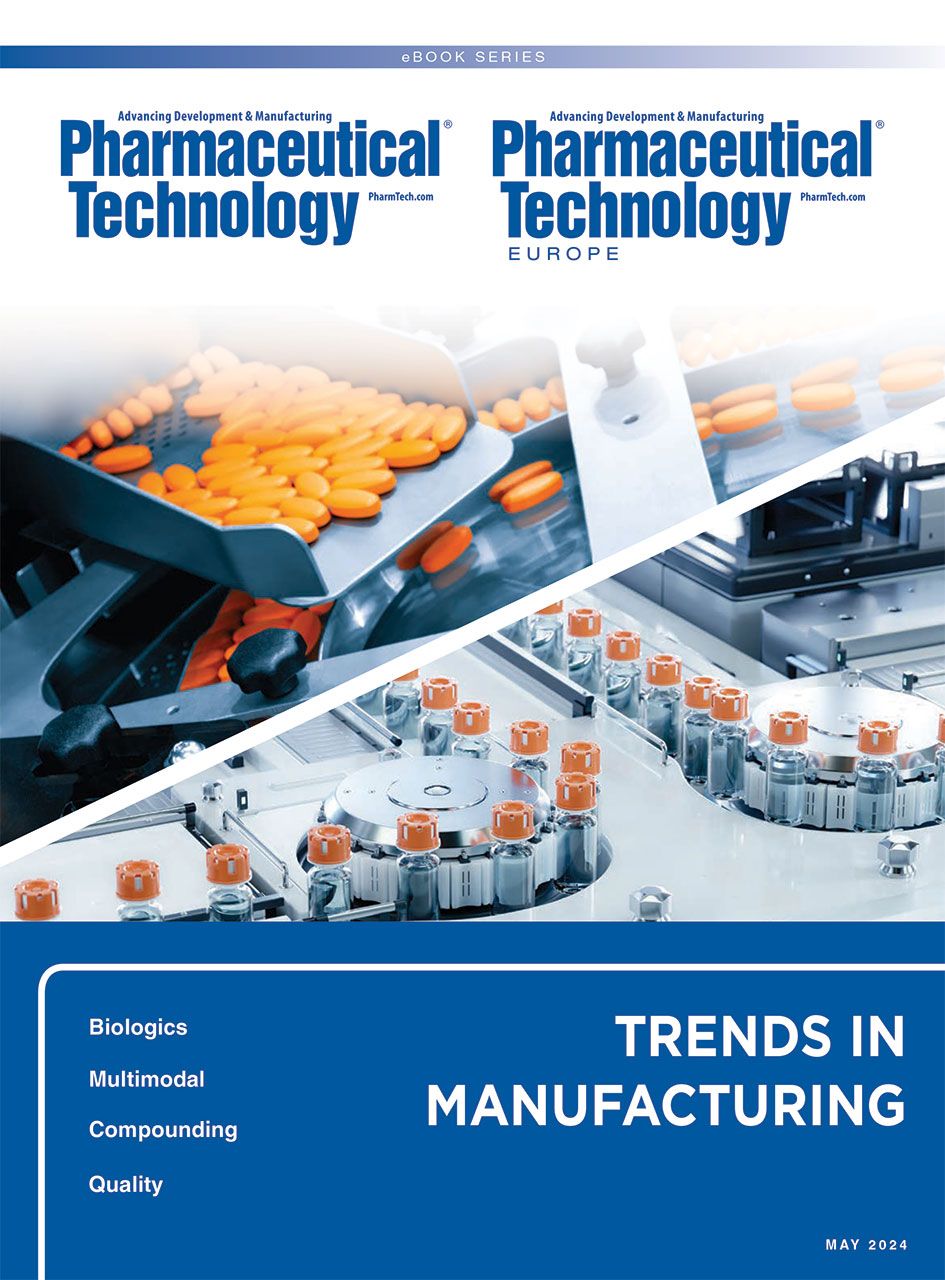Trends in Manufacturing eBook
Read the article: Exploring Multimodal Biomanufacturing and Its Drivers
Read the eBook: Pharmaceutical Technology’s Trends in Manufacturing May 2024
A combination of rapid sterility methods with the industry standard compendial method should ensure maximum safety.
Muhammad - stock.adobe.com

Multimodal manufacturing is a strategic approach that harnesses the power of diverse manufacturing methods to optimize and streamline the production process, specifically within the realm of human therapeutics in the advanced therapy medicinal products (ATMP) space. This concept involves integrating different manufacturing techniques/platforms to improve efficiency, reduce costs, and enhance the overall quality of the manufacturing process and the eventual therapeutic product slated for licensure.
Read the article: Exploring Multimodal Biomanufacturing and Its Drivers
Read the eBook: Pharmaceutical Technology’s Trends in Manufacturing May 2024
In a White House report, Bold Goals for US Biotechnology and Biomanufacturing, a prominent objective is to test and de-risk new biomanufacturing practices for next-generation biotechnology products in commercial manufacturing facilities (1). The growing focus in cell-based therapies, a key component of the next generation of human therapeutics, has led many organizations to focus their development efforts into a multitude of platforms.
Multimodal is not new. For the ATMP space, it was identified back in 2017 as a viable manufacturing option for clinical needs. In the context of the biotechnology ATMP space, multimodal manufacturing techniques are being applied to optimize the production of complex biological compounds and therapies that are studied in multi-omic research, such as gene editing (1).
In reality, many contract development and manufacturing organizations have been operating in a quasi-multimodal manner for decades. Multimodal can include vaccines, monoclonal antibodies (mAbs), viral vectors, plasmids, allogeneic cell therapies, and autologous cell therapies. The challenge is crafting a manufacturing plan that supports one’s business without attempting to become a one-size-fits-all solution for every need.
The forecasted growth of the cell and gene therapy (CGT) market is significant. The ATMP space, where CGT continues to serve as the primary catalyst for growth, is predicted to grow at a compound annual growth rate of 39.4% for the period from 2024 until 2030 (2).
In this growth projection, cell therapies account for 15% of the growth and gene therapies account for another 30% of growth, with many of these products advancing out of early-stage clinical manufacturing toward commercialization (2).
Just as the 1990’s large-molecule market saw a “fork-in-the-road” decision regarding single vs. multi-product manufacturing and the technologies to implement (3), the ATMP space is grappling with critical questions around asset size, cost, technology implementation, flexibility, scale, and many others. Transitioning to a multimodal manufacturing strategy could very well emerge as the most prudent business and operational solution.
Another key driver fueling the multimodal manufacturing discourse is the rapid pace of advancement in research, developing different modes of therapy to address multiple human therapeutic targets. Combination therapies using multiple therapeutic modalities have elevated anti-cancer activity while lowering doses of agents, thus reducing side effects (4). As previously referenced, gene editing tools such as clustered regularly interspaced palindromic repeats (CRISPR)-Cas, transcription activator-like effector nucleases (TALENs), and base editing have brought about multiple therapeutic solutions that are being provided for chronic diseases and oncolytic cancer treatments, as well as advanced chimeric antigen receptor T cell (CAR-T) and T-cell receptor (TCR) therapies.
Read this article in Pharmaceutical Technology’s Trends in Manufacturing May 2024 eBook.
1. The White House. Bold Goals for US Biotechnology and Biomanufacturing: Harnessing Research and Development to Further Societal Goals. White House, Executive Order 14081, March 2023.
2. Vision Research Reports. Cell and Gene Therapy Market (By Therapy Type: Gene Therapy, Cell Therapy; By Application: Oncology, Genetic Disorders, Dermatology Disorders, Musculoskeletal Disorders, Others; End-Users: Hospitals, Cancer Care Centers, Wound Care Centers, Others)—Global Industry Analysis, Size, Share, Growth, Trends, Regional Outlook, and Forecast 2022-2030. Market Research Report, July 2022.
3. Witcher, M.F.; Carbonell, R.;Odum, J.; et al. Facility of the Future: Next Generation Biomanufacturing Forum Parts I, II, III. Pharmaceutical Engineering 2013, 33 (1–3).
Jeff Odum, CPIP, is practice lead, ATMPs & Biologics, at Genesis AEC.
Pharmaceutical Technology/Pharmaceutical Technology Europe Trends in Manufacturing eBook
Issue 4
May 2024
Pages: 12–20
When referring to this article, please cite it as Odum, J. Exploring Multimodal Biomanufacturing and Its Drivers. Trends in Manufacturing eBook. May 2024.

Drug Solutions Podcast: A Closer Look at mRNA in Oncology and Vaccines
April 30th 2024In this episode fo the Drug Solutions Podcast, etherna’s vice-president of Technology and Innovation, Stefaan De Koker, discusses the merits and challenges of using mRNA as the foundation for therapeutics in oncology as well as for vaccines.